
The three hole pipe is an ancient instrument, dating back to bone flutes found in the Neolithic. It has been popular throughout Europe and parts of the Americas as a dance instrument since it can be played with just one hand, leaving the other hand free to play a percussion instrument – a drum, a string drone, a triangle. On this page I’ve collected notes and sources I’ve used to make reconstructions of 3 hole pipes from renaissance Europe. We are particularly fortunate in that there are written sources, iconographical sources, and surviving instruments from this period – meaning that very little guesswork is needed to create working modern instruments.
One if the distinctive features of the 3-hole pipe is it’s bore. It is very narrow compared to any other kind of cross or end-blown flute. This is because the instrument is intended to play only in the second register and up. The narrow bore means that the higher registers play easily at the expense of the lowest register, which is not used. Almost all 3-hole pipes are cylindrically bored, since a tapered bore would be difficult to construct, and would likely be destructive to the evenness of the instruments tuning. The ratio of the bore to the sounding length is a valuable clue when looking at instruments that are incomplete. Some of the instruments below have bore ratios noted. for smaller instruments this can be as high as 40 to 1 (for a galoubet from the south of France, 285 mm sounding length, made by M. Fabre), to around 36 for the larger of the Mary Rose pipes pictured below (729 mm sounding length).
Sources:
The excavation of the Mary Rose, 3 extant instruments:

Three pipes have been recovered from the wreck of the Mary Rose, King Henry VIII’s flagship, which sank in July of 1545. The ship has remained for the most part buried in mud, until excavation started in 1969, preserving wood and fabric in unusually good condition. These instruments were described by Frances Palmer as follows in the January, 1983 issue of the journal Early Music:
Instrument 1: Overall length 449 mm, sounding length 414. (Collection number: 81A1191)
“A pipe made of fruit-wood was recovered from the main deck of the Mary Rose. close to a cabin which is known to have been occupied by an archer, a carpenter and one other man who has not yet been identified. It was found in association with equipment belonging to the Queen’s Company of Archers.
The pipe is made from a single piece of wood and is of a simple cylindrical form, without any decoration apart from an incised line which marks the lower edge of the beak mouthpiece. The block is missing. As one would expect from the documentary sources, the bore is very narrow in proportion to its length: the sounding length is some 41.6cm, while the diameter of the bore is approximately 1.2cm at the foot. The instrument may have been distorted, as the bore at the foot shows an irregular, oval section. The three holes are placed just above the foot, and the thumb-hole is in the highest position, agreeing with the illustration in Praetorius. The turned ring is present and the foot does not expand at all. A rather blurred mark is branded into the front of the pipe between the ring and the foot. The mark is hard to read but it may be the rabbit’s footprint tentatively associated with Venice.”
The rabbit’s foot mark (or two plumes mark, or just possibly silkworm wings) is likely associated with the family of Jeronimo Bassano, known as woodwind players and makers in Venice. Some members of his family joined the court of King Henry VIII, so the connection with this instrument is not unlikely. Jeremy Montague confirms this in his physical study of the instrument in FOMRHI communication 1818. The wood may be boxwood.
Notes on dimensions of this pipe:
Jermey Montague, in FOMRHI comm 1577 gives the size of the instrument as:
“The other almost playable instrument is a smaller pipe, one with an indecipherable mark (on which we hope to be able to report more fully in due course). This measures OL 468, Up to end 435, and all it needs is a new block.”.
This is different enough from Palmers estimate to be significant. Additionally, Graham Lyndon-Jones, in FOMRHI Comm 1654 gives the length of the pipe to be 449.
I asked Jeremy Montague if he could clarify this discrepancy, and he confirmed (in personal correspondence) that the correct measurements for this pipe give a overall length of 449 mm, with a sounding length of 414.
Instrument 2: Overall length 829 mm. (Collection number 81A3901)

“Recovered from the storage area in the orlop deck, the lowest part of the ship. One complete example is made of cherry-wood (illus.). It is much longer than the first example and the mouthpiece and window have an elongated outline which harmonizes with the overall silhouette. Again, the pipe is plain except for an incised line below the mouthpiece and the turned ring at the foot. Its overall length is some 80cm with a sounding length of 72cm. The bore at the foot is approximately 2cm in diameter, although it, too, has been distorted into an irregular oval. The holes are arranged as in the smaller instrument, with the thumb-hole much higher than the other two. The name ‘E. LEGROS’ on a scroll is branded into the front of the instrument just above the foot. When the pipe was recovered, a cylindrical rod of wood about 38cm long was found inside it. This is completely unshaped and may be the drumstick. The remains of the case were found with the pipe; this seems to have been a wooden cylinder made from a single sheet of wood shaped into a tube and covered with leather. A carrying strap is attached at one end.”
Notes on dimensions of this pipe:
The sounding length given by Palmer (720 mm) does not match up with the given length overall (800). When you scale the overall image to 800 mm, the sounding length is 730, a 10 mm difference. When I saw the actual instruments they were shut away in a glass case, and it was impossible to get better information. Others have been more fortunate. Jeremy Montague gave a summary of his inspection of these instruments in FOMRHI 1577, and updated in FOMRHI 1818. In the first article, he gives the following dimensions for this pipe:
“It is an extraordinary instrument. overall length 850mm and lip or voicing edge to the end of the foot 767 mm, a considerable stretch for Charlie and me, and we’re both taller than the average population of the Mary Rose.”
Graham Lyndon-Jones gives the length to be 829 in FOMRHI Comm 1654, which adds to the confusion. He also has some images of the pipe that are not available from other sources, along with an interesting period engraving showing a pipe of this scale being used along with a fiddle of the style found in the ship.
In personal correspondence, Jeremy Montague was kind enough to clarify these measurements as 829mm for the total length of the instrument, and noted that the material is cherry wood.
Click here to download a full-size version of this image, scaled in Photoshop with the assumption that the instrument is 800 mm long. The image was created at 96 pixels per inch, which should allow you to print a full size image. Or download a pdf version that can be printed on multiple sheets from the free Adobe Acrobat PDF reader. I’ll be updating this information when time allows to match the revised length of 829. Quite a stretch.
The ratio of the bore to the sounding length (720 / 20) is around 36.
Instrument 3: Incomplete. (Collection number: 81A5846)
“Recovered from the storage area in the orlop deck, the lowest part of the ship. The third example is also made in the longer form but it is not as well preserved as the other two. The mouthpiece has been crushed as far as the bottom of the window, the lower edge of which can be seen on the surviving section of the pipe. It is made of a dark wood and there are the remains of a silver mount at the foot and another that perhaps passed round the mouthpiece. It is unmarked.”
The significance of this instrument is that it was not found in close proximity to instrument #2, meaning that it was likely owned by someone else. The workmanship on the instrument is said to be poor, as is it’s condition, but Montague describes it as very close to the size of #2, implying that this was not an uncommon length.
Graham Lyndon-Jones lists the length of this instrument as about 740 mm.
Jeremy Montague confirms that the length of the instrument is currently 729, but is badly damaged. If the missing piece was replaced in the style of the Legros pipe (81A3901), the overall length would be around 808mm.
Further study:
Jeremy Montague writes (FOMRHI comm 1818)
“We were all three asked to write the relevant section of the catalogue of finds, published as Before the Mast: Life and Death aboard the Mary Rose, edited by Julie Gardiner, published in 2005 by the Mary Rose Trust in Portsmouth. This is a huge, and quite expensive tome, but in it are photographs of all the finds, as well as the original drawings made by the archaeologists, some of which Frances Palmer had published 22 years earlier.”
This may contain an accurate representation of the instrument, but unfortunately the book is both expensive and hard to come by here in the states. Jeremy Montague was kind enough to summarize the information given here, and I’ve added his measurements to the sections above.
The Syntagma Musicum of Michael Praetorius, 1619. Volume 2.
Measured drawing, descriptive text and range.
Source: The Syntagma Musicum of Michael Praetorius, Translated by Harold Blumenfield.

Two Three-Hole Pipes, as illustrated by Praetorius. The larger of the instruments has a total length of 802 mm, which makes it a close match for the instrument recovered from the Mary Rose. The crook is an interesting addition, which is seen in at least 1 other surviving instrument.
The smaller instrument scales to about 565 mm.
Click here to download a full-size version of this image, scaled in Photoshop, scaling the instrument according to the scale attached to the illustration. A pdf version that can be printed from Adobe Acrobat can be found here. The scale was calibrated to the Brunswick Foot. The image was created at 96 pixels per inch.

A Tabor associated with the above 3-hole pipes.
Praetorius says the following regarding the 3-Hole Pipe and Tabor:
“Here should also be mentioned the Schwegel, also called Stamentien-pipe. It has only two holes on the front bottom and one in back. It is similar in length to the transverse flute, but is blown like a recorder. The English use it together with a drum and play it with the left hand. (plate IX) It goes in range from d’ up to d'”, e'” and even further. Some are a fifth lower, from g” or a”. It is remarkable that with but three holes this instrument affords the same extent of range as instruments with six or seven holes.
Then there are also very small recorders about three or four inches long and with three holes in front and one in back. These similarly afford almost two octaves, (plate IX). Both the Schwegel and these very small recorders must be supported at the end by the fifth finger. The Stamentien-pipe is twenty inches long, its tenor, 26, and bass, 30.”
Notes:
These dimensions do not, by the way, match the illustration for the tenor and bass pipes.
Praetorius’s measurements are given in the “Brunswick Foot”, which translates to 285.35 mm. This would put the Brunswick inch at 23.77.
Praetorius’s pitches are, most likely, Renaissance Pitch, or a = 460 (1 semitone sharp from a=440).
Instrument 1: “Very small recorders”

This source alone does not provide enough information, other that the illustration of the smallest recorder, which may have 3 holes. A better reproduction of plate IX, along with more research might help shed some light.
Instrument 2: Alto “Stamentien-pipe”, LOA 475 mm

20 Brunswick inches, or 475.4 mm. This is too small to be one of the instruments illustrated in Plate IV. No pitch is mentioned for an instrument of this voice.
Instrument 3: Tenor “Stamentien-pipe”, LOA 570 mm, sounding length = 525. Key of d (ren) listed by Praetorius?
LOA 565 mm. This is the smaller of the two instruments illustrated in Plate IV. Key of d (ren) listed by Praetorius?
Praetorius gives a range for a tenor instrument of “d’ up to d'”, e'” and even further”. Converted from Renaissance Pitch, this would work out to a range of eb’ up to eb'”,f”’, and higher. It should be noted that the illustrations in Praetorius’s plates are usually accurate in length, but have exaggerated turning details (nescessary to make the engraving make visual sense)–I would assume that the flair of the bell would be more in keeping with what we know of the style from extent renaissance recorders.
Instrument 4: Tenor “Stamentien-pipe”, LOA 618 mm. ??
Praetorius, in his descriptive text, gives a measure of 26 Brunswick inches, or 618 mm for the tenor. This is too large to be one of the instruments illustrated in Plate IV.–either this is an approximation or error on Praetorius’s part (which happens fairly commonly) or it refers to another instrument, not pictured.
Instrument 5: Bass “Stamentien-pipe”, LOA 713 mm ??
Praetorius, in his descriptive text, gives a measure of 30 Brunswick inches, or 713 mm for the bass. This is too small to be one of the instruments illustrated in Plate IV. See comments above.
Instrument 6: Bass “Stamentien-pipe”, LOA 802 mm Pitch of g, renaissance pitch, ab modern pitch

LOA 565 mm. This is the smaller of the two instruments illustrated in Plate IX.
Praetorius gives a range for a bass instrument starting at g” or a”, a fifth below the tenor instrument. (g’ up to g”’) and higher. Converted from Renaissance Pitch, this would work out to a range of ab’ up to ab'”,bb”’, and higher. It should be noted that the illustrations in Praetorius’s plates are usually accurate in length, but have exaggerated turning details (necessary to make the engraving make visual sense)–I assume that the flair of the bell would be more in keeping with what we know of the style from extent renaissance recorders.
The estimated pitch based on length matches Praetorius’s pitch of g.
Marin Mersenne, Harmonie Universelle, 1636: No dimensions, but good tablature.
Sounding length of about 390 mm, LOA of about 415, key of g#. modern pitch
Harmonie Universelle, the Books on Instruments, translated by Roger Chapman
“PROPOSITION V

To explain the shape, range, tablature, and the use of the flute with three holes.
“Although this instrument (figure 46)can be joined with the preceding ones, because it has only three holes, that is two in front marked with 2 and 3, and the other behind marked by 1, (unless it is wished to count as first the hole of the plug A through which it is blown, the second, B, which serves as flue, and the last of the end C. so as to locate six holes) nevertheless I have wished to separate it as much by reason of its great range, as of its tablature which I give here in two ways. that is to say by the ordinary musical notes and by the marks used by those who do not understand the value and use of the ordinary notes.
Now it is so easy to understand this tablature that there is no need of explanation, unless for the instruction of those who have never seen it or who do not know how to sound the flutes and the flageolet. It is then in their behalf that I first say that the notes contain the range of a seventeenth, and that I have changed the clef because one can rise only a tenth with the first clef of F ut fa, using only five lines. Here it must be noted that many do not give the first four notes in the range of this tablature because they do not pass through all the degrees of the octave, for after the fourth or the four tones ut, re, mi, fa, that form the lowest four notes of this instrument, four other notes to reach the fifth above cannot be produced to complete the octave. That is why one can begin this tablature by the fifth note, which is at the octave with the first and which occurs on G re sol so that it has only the range of the eleventh, which contains all that one can ordinarily produce with this flute.
The notes which are preceded by the flat signify the alterations, the accidentals, or the semitones which are made by moderating the wind or by working the fingers by which the holes are stopped more or less so as to sound the pieces in B-flat. Now the note which is on the clef of C sol ut fa and which begins again at the bottom on the first line continues the tones which have begun on the other clef and serves as the root for completing the remainder of the range, as the notes which follow show. As to the other characters, they must be explained so clearly that there will be no need of speaking of them in the discourse on the other flutes that make use of them.
PROPOSITION VI
I say then, in the second place, that the black lines, which fall perpendicularly upon the three lines of the tablature signify the number of the holes which must be stopped to make the sounds marked by the notes below. For example, the first three, which are on the three lines, signify that the first note is made by stopping the three holes, and by blowing the wind as softly as can be. The two other lines that follow show that it is necessary to stop the two holes marked one and two and to keep open the last hole marked by 3 to make the re, or the second note; the small line which then follows signifies that it is necessary to close only the first hole to make the mi, or the third note; and the three zeros or the three circles indicate that all the holes must be left open to make the fourth note, or the fa. But one cannot continue from the sol to the octave, so he is forced to pass in one jump to the fifth above, so as to take the octave of the first note, which has its octave above when one begins again to stop the holes, and the wind is made more forceful. This must be noted even more closely, inasmuch as the same thing occurs in many other wind instruments, like the flageolet and flutes, which rise an octave and sometimes a fifteenth, and a twenty-second, depending on how one increases the wind; thus some men are found who perform a range of a twenty-second on the three-holed flute, on which I have heard the experiments of Jean Price Anglois. Now: it is certain that one can perform all the parts of music with many three-holed flutes, as with the others, although these concerts are not customary. That is why I am giving no example of it.”
The tablature given here is valuable in that it shows a three-hole scale in the English style, where the thumb-hole is tuned to produce a semitone, unlike 3-hole pipes of the French tradition (which I assume also existed at this time) where the thumb produces a whole step.
The pipe shown then is in the key of G, tuned 221. (G-2 semi-A-2 semi-B-1 semi-C-) A rough experiment with an old generation 3-hole pipe in d, shows that an additional paper tube gives a total sounding length of about 400 mm, LOA of 425. G# = 390 and 415, respectively. This tablature is discussed in detail by my one time historical woodwind teacher, Graham Lyndon-Jones FOMRHI communication #1652.

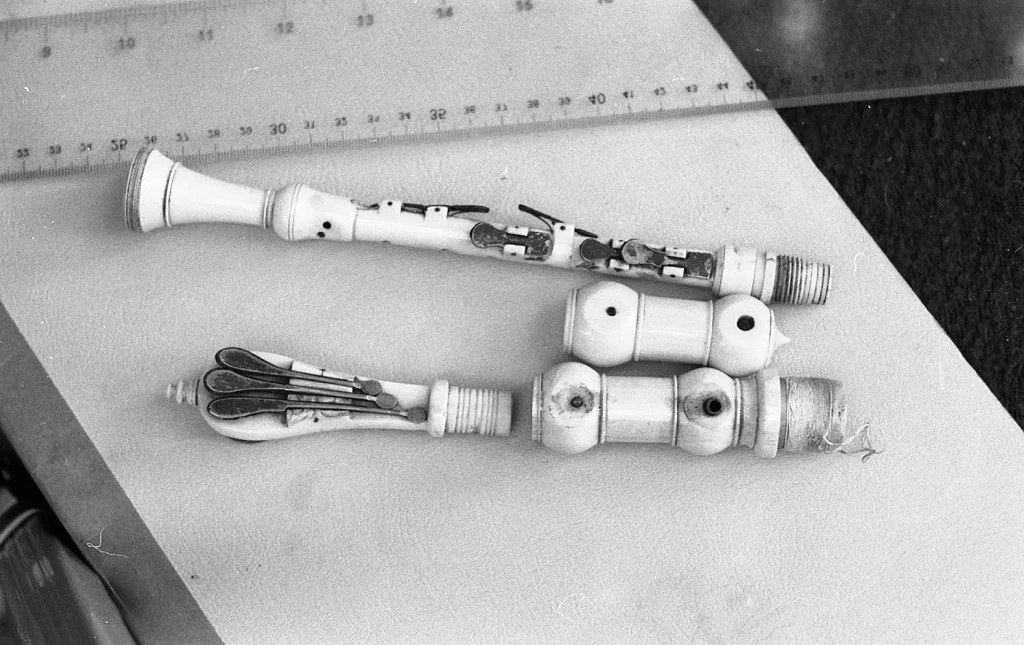




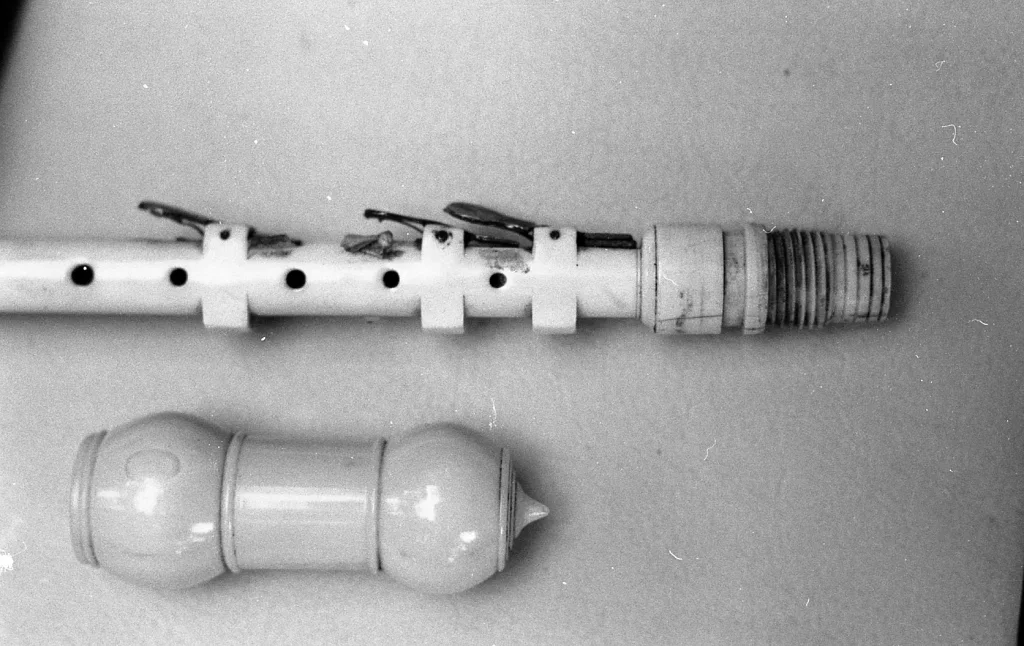



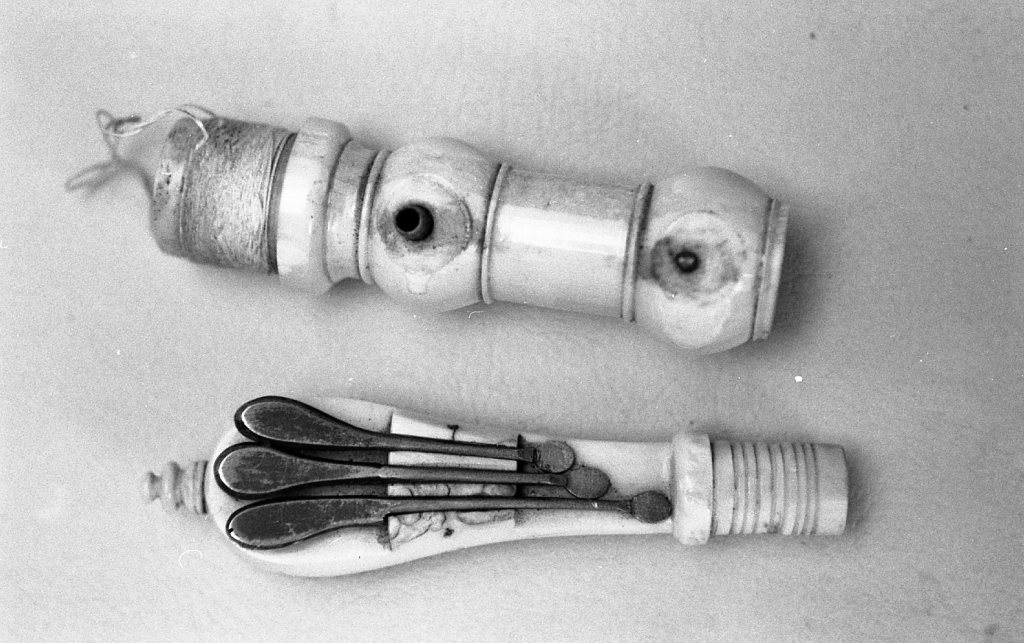



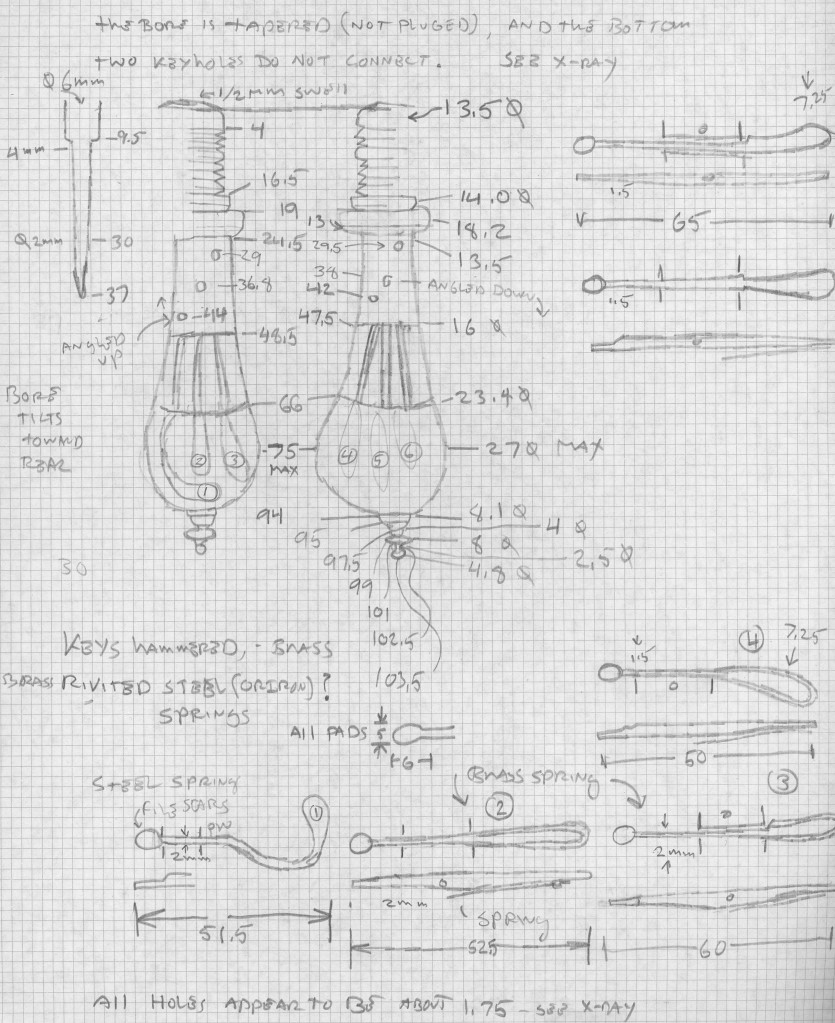



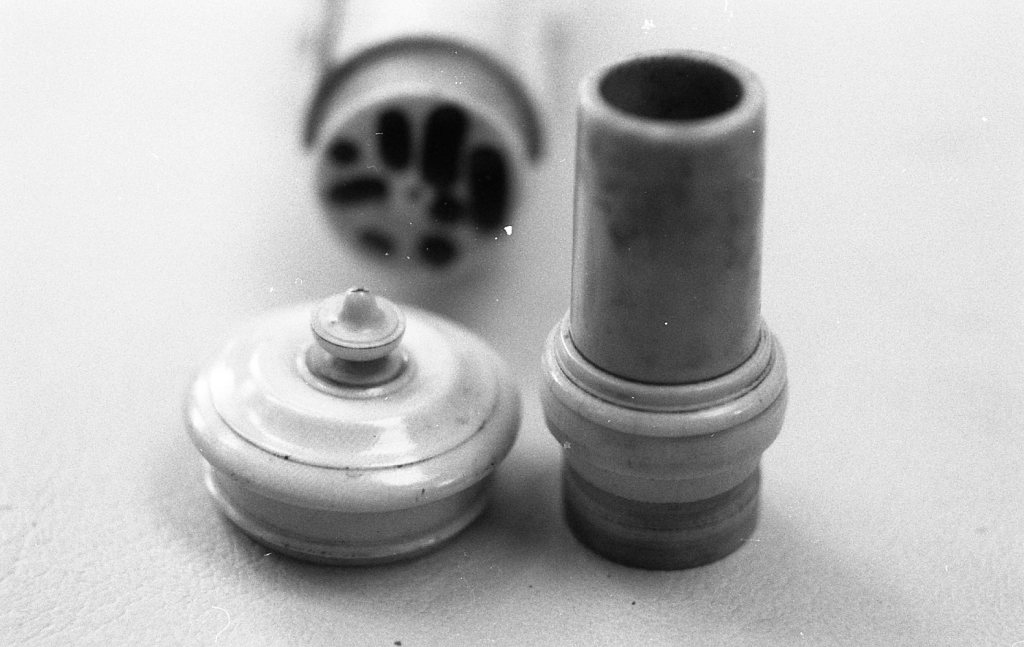






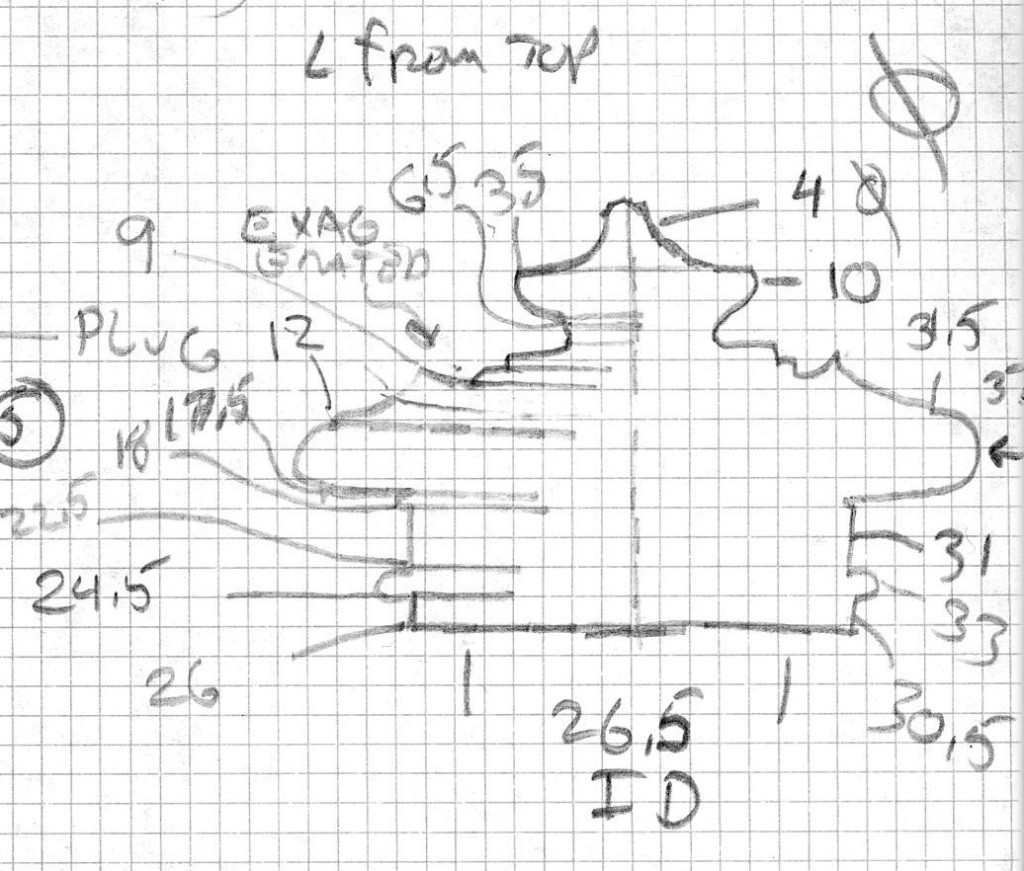
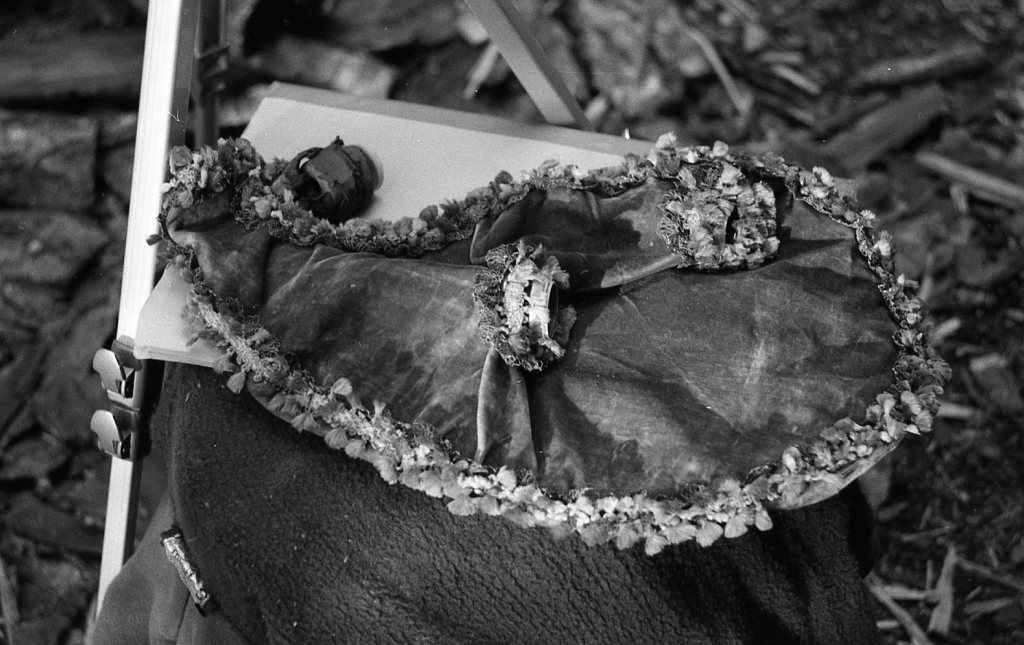




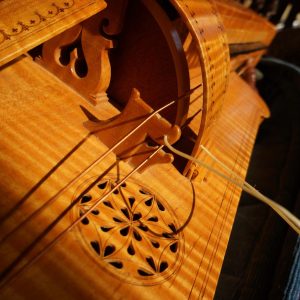















 The earliest recordings of these ensembles are from the field recordings of Hugh Tracy, who traveled through southern Africa between 1935 and 1955, making a series of exceptional recordings of traditional music. His recordings are available from the
The earliest recordings of these ensembles are from the field recordings of Hugh Tracy, who traveled through southern Africa between 1935 and 1955, making a series of exceptional recordings of traditional music. His recordings are available from the 
 Cleveland’s Quills Blues can be heard at this site:
Cleveland’s Quills Blues can be heard at this site:  Sid Hemphill and Alec Askew were recorded by Alan Lomax, and their playing is included in the Alan Lomax collection, Southern Journey, Vol. 1. A clip of Hemphill’s playing can be heard on Amazon.com’s page for this recording. Another interesting recording is Traveling Through the Jungle, which features a different performance by
Sid Hemphill and Alec Askew were recorded by Alan Lomax, and their playing is included in the Alan Lomax collection, Southern Journey, Vol. 1. A clip of Hemphill’s playing can be heard on Amazon.com’s page for this recording. Another interesting recording is Traveling Through the Jungle, which features a different performance by 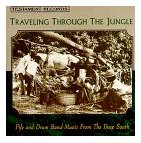 Hemphill.
Hemphill. included on the Document CD Field Recordings Vol 15 (DOCD 5672), where Lomax asks Askew to play the individual notes–this makes analysis easy, and I’ve included the tuning of this set of pipes in the article Reconstructing the quills.
included on the Document CD Field Recordings Vol 15 (DOCD 5672), where Lomax asks Askew to play the individual notes–this makes analysis easy, and I’ve included the tuning of this set of pipes in the article Reconstructing the quills. These recordings can be heard on two collections: Texas Worried Blues (Yazoo), and Ragtime Texas (Document).
These recordings can be heard on two collections: Texas Worried Blues (Yazoo), and Ragtime Texas (Document).
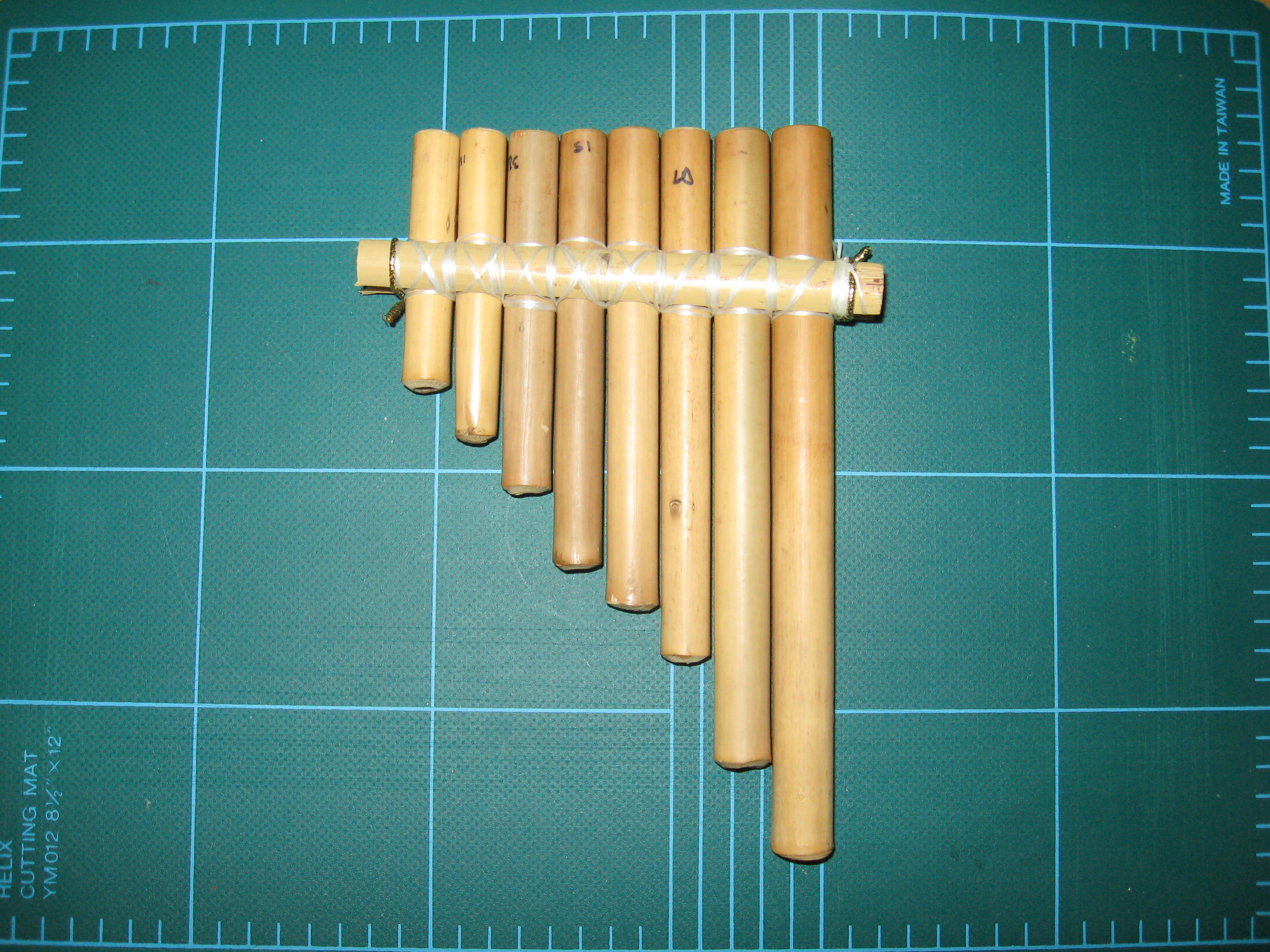 As of this writing, there is no good source of practical information available regarding the construction of pan pipes, so I did a couple of tests to establish some general principles for pan-pipe scaling. The question I was trying to answer was:
As of this writing, there is no good source of practical information available regarding the construction of pan pipes, so I did a couple of tests to establish some general principles for pan-pipe scaling. The question I was trying to answer was:







 Renaissance recorders were popular throughout Europe from about 1500 to 1650. They were among the most popular “consort” instruments, meaning that they were played in groups (or consorts). A typical consort for renaissance recorders would be made up of one alto, two tenors, and a bass instrument. Michael Praetorius, writing in 1618, expressed a preference for a consort made up of a tenor, two bass recorders, and a great bass. Praetorius also mentions an “ideal” consort made up of 21 instruments, made in 7 different sizes. He illustrated these instruments in his encyclopedic Syntagma Musicum.
Renaissance recorders were popular throughout Europe from about 1500 to 1650. They were among the most popular “consort” instruments, meaning that they were played in groups (or consorts). A typical consort for renaissance recorders would be made up of one alto, two tenors, and a bass instrument. Michael Praetorius, writing in 1618, expressed a preference for a consort made up of a tenor, two bass recorders, and a great bass. Praetorius also mentions an “ideal” consort made up of 21 instruments, made in 7 different sizes. He illustrated these instruments in his encyclopedic Syntagma Musicum.














